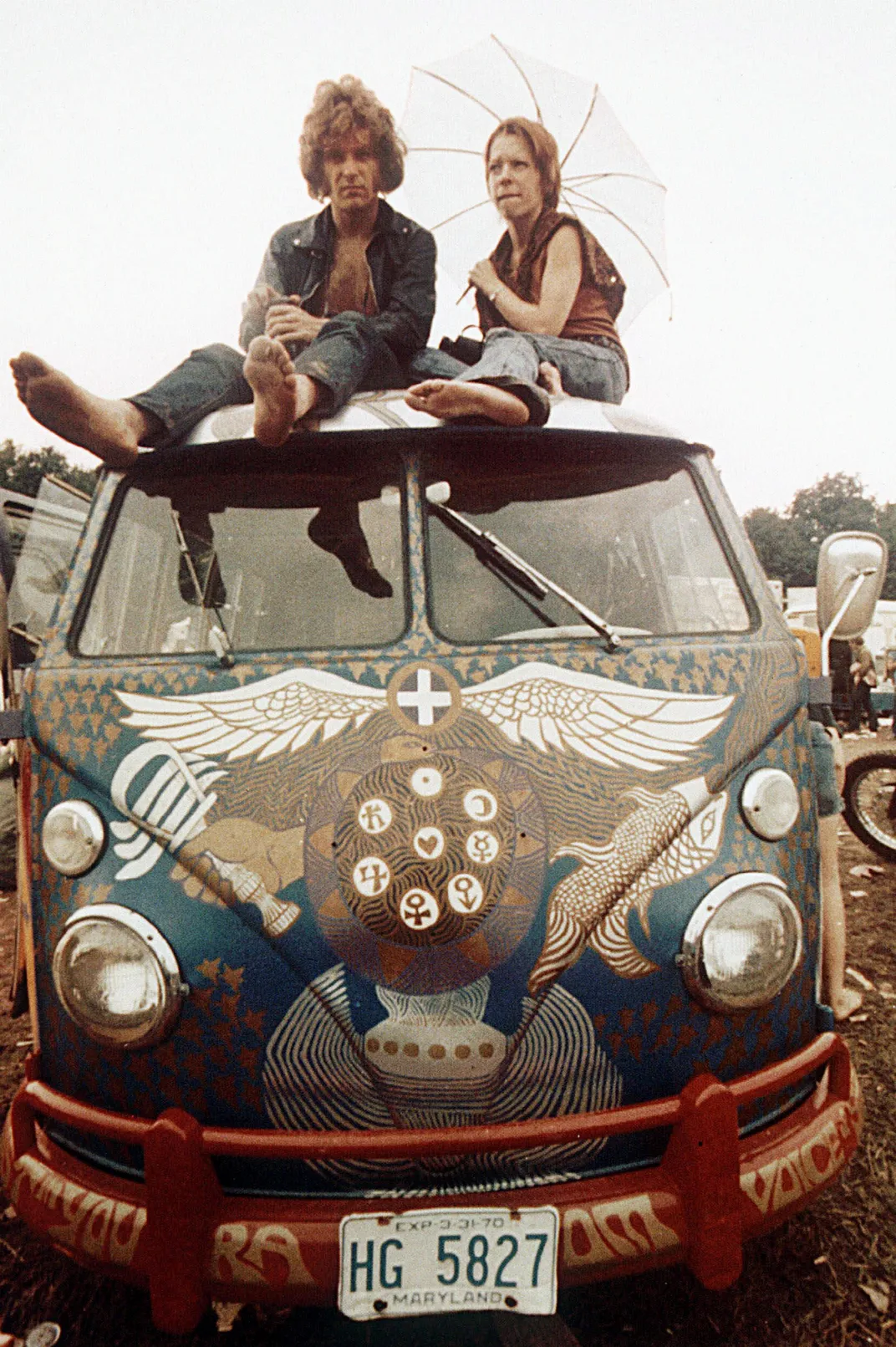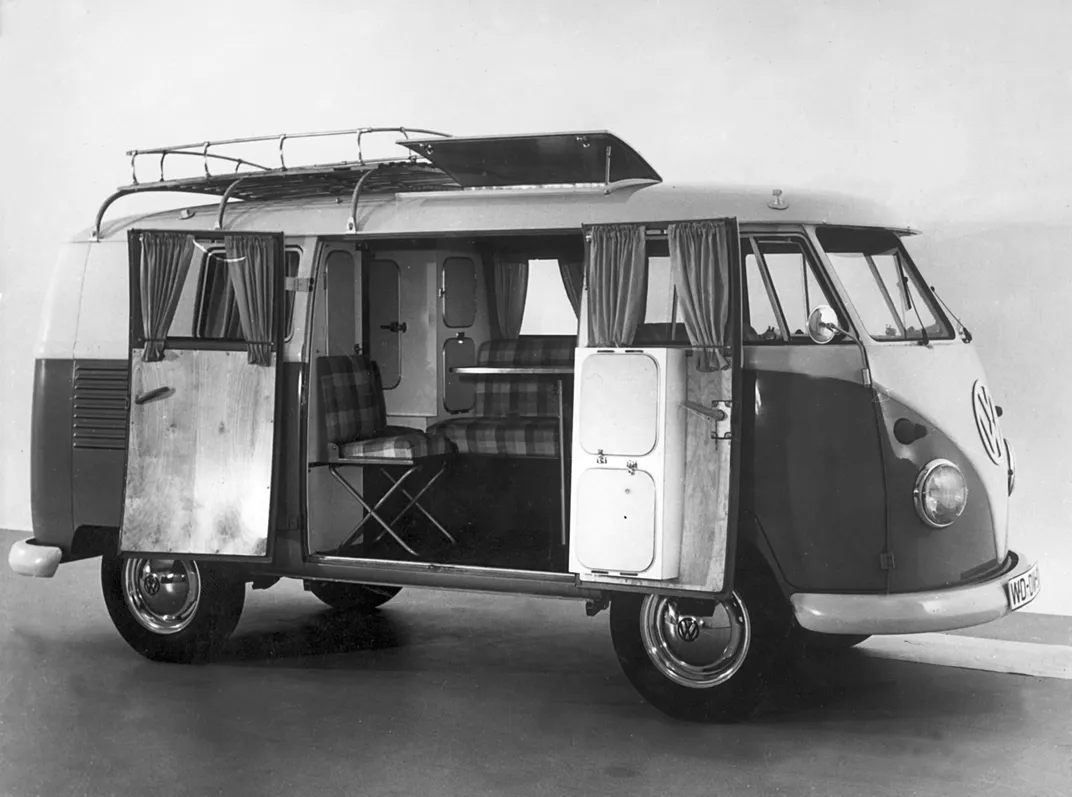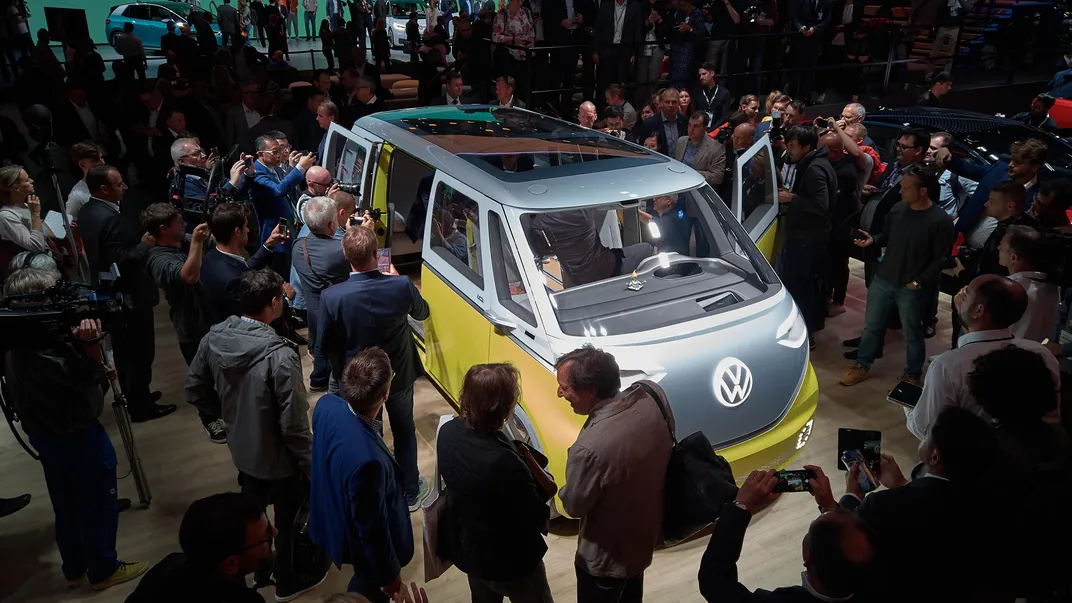How the Volkswagen Bus Became a Symbol of Counterculture
Seventy years ago, the German car manufacturer started producing the Microbus—the first van and a striking vehicle for protest
/https://tf-cmsv2-smithsonianmag-media.s3.amazonaws.com/filer/76/47/7647deda-76a2-4b7d-aa3f-7aff09453c4e/vw_microbus_1964.jpg)
When Jerry Garcia passed away in 1995, Volkswagen remembered the Grateful Dead frontman by running an ad featuring a VW Microbus with a tear streaming from one headlight. It was an epochal moment when two counterculture symbols came together in tender recognition of their influence on mainstream society.
In the 1960s, both Garcia and the Microbus came to represent a growing angst in America about the country’s role as a nuclear superpower and its reliance on commercialism to feed a voracious appetite for more, more, more. A certain segment of society decided to “turn on, tune in and drop out,” as Harvard psychologist Timothy Leary put it, by focusing on the psychedelic rock music performed by bands like the Grateful Dead and traveling around in Microbuses covered with depictions of peace signs and flowers.
“For many people, the VW Microbus became the symbol of protest with Detroit’s overpowered cars and society in general,” says Roger White, curator of road transportation history with the Division of Work and Industry at the Smithsonian’s National Museum of American History. “It was a way of thumbing their noses at the establishment.”

That’s quite a transition for the vehicle, considering its roots. Known as Type 2, the Microbus was an offshoot of the VW Beetle, called Type 1, which dates to 1933 when Adolf Hitler, the leader of Nazi Germany, proposed a “people’s car”—or Volkswagen—for the masses. Postwar, the company was looking to expand its product line by offering a vehicle that would shake up the automotive industry.
“This was the first van,” White says. “Before this, people used large cars, trucks and buses to haul people and cargo around.”
Regardless of its origins, the VW Microbus marks its 70th anniversary as both an icon and mode of transportation. The first vehicle went into production March 8, 1950, at a Volkswagen plant in West Germany, and changed the way the world looked at cars.
The Microbus design was created by Ben Pon, a Dutch importer of VW Beetles. He was inspired to sketch the first van in 1947 after seeing a flatbed parts-hauler made from a Type I chassis while visiting the Volkswagen plant. The German car manufacturer began tinkering with the idea and finally went into production in 1950. Two versions were initially offered: the Kombi, with side windows and removable middle and rear seats, and the Commercial, essentially the first panel van.
Volkswagen’s marketing approach for the new product line was an extension of its advertising for the Beetle: promote its simple styling and usefulness as a vehicle for home, work and play. People loved the fact that the VW Microbus could transport goods of all kinds—human and otherwise. With a roomy interior, rear-wheel drive and air-cooled engine, it was easy to operate and maintain. In the United States, it was seen as a cost-effective alternative to the family station wagon.

And it was fun to customize. Almost as soon as it rolled off the assembly line, owners began adapting the Microbus to their own needs. Soon, it was being used as a camper by outdoor enthusiasts who outfitted it with beds, sinks and more. Volkswagen took note of this trend and contracted with Westfalia, a German company known for building carts and wagons, to begin making camper conversion kits. The first VW Westfalia campers were exported to the United States in 1956.
As the Microbus became more accepted in America, it began to take on a cult status with fringe groups. Its boxy appearance—so unlike anything the major auto manufacturers in Detroit were producing—became a symbol for counterculture types, who wanted to stand out from the rest of crowd. Some owners painted peace signs on the Microbus, earning it the nickname “hippie bus.”
“It became popular with people who were rejecting mainstream American culture,” White says. “It was their way of saying, ‘We don’t need your big V8 cars.’”
The VW Microbus was also a favorite of marginalized members of society, who could use the versatile vehicle to transport people to rallies, polling stations, protests and more during the political and cultural upheaval that laced the 1960s.

One Microbus in particular stands out today as an emblem of the racial strife that plagued much of America during the decade. It was driven around the Sea Islands near Charleston, South Carolina, by Esau and Janie Jenkins, civil rights activists who wanted to make a difference in their community. They used this 1966 VW Transporter to take African-American children to school and adults to work in the segregated South.
“Esau would drive the Microbus while Janie would teach passengers about the South Carolina constitution,” says William Pretzer, senior curator at the National Museum of African American History and Culture. “They wanted people to know their rights so they could stand up for themselves. They did this for years.”
Two pieces of that now rusted and faded green Microbus are on display at the museum, which opened in 2016 on the National Mall in Washington, D.C.: a side panel and rear hatch. Still visible on the latter are the words painted by the Jenkins, “LOVE IS PROGRESS. HATE IS EXPENSIVE.”
“These pieces enlarge the narrative of what was happening at that time,” Pretzer says. “They help us all to understand the rejection of rights and citizenship that existed then. It’s not black history; it’s American history.”

The VW Microbus persevered through a tumultuous time in America. Millions were made, but eventually the social revolution subsided and so did interest in the vehicle. Production ceased in 2014. However, all is not lost! This counterculture symbol is about to make a comeback in 2022—as an electric vehicle.
Currently known as the I.D. Buzz, the newest version of the Microbus will deliver 369 horsepower from electric motors on each axle. The original Type 2 sold in the United States in 1950 had all of 30 horsepower.
Still, it’s a far cry from those disorderly days as a hippie van hauling long-haired young people to rock concerts. Just ask William Pretzer. He recalls such a scenario from 1971, when he and his friends tried to make it to Oakland Coliseum to see the Rolling Stones play.
“The fan belt broke and the van filled with smoke,” he recalls. “That air-cooled engine was fried.”
Maybe an electric Microbus isn’t a bad idea after all.
/https://tf-cmsv2-smithsonianmag-media.s3.amazonaws.com/accounts/headshot/dave.png)
/https://tf-cmsv2-smithsonianmag-media.s3.amazonaws.com/accounts/headshot/dave.png)